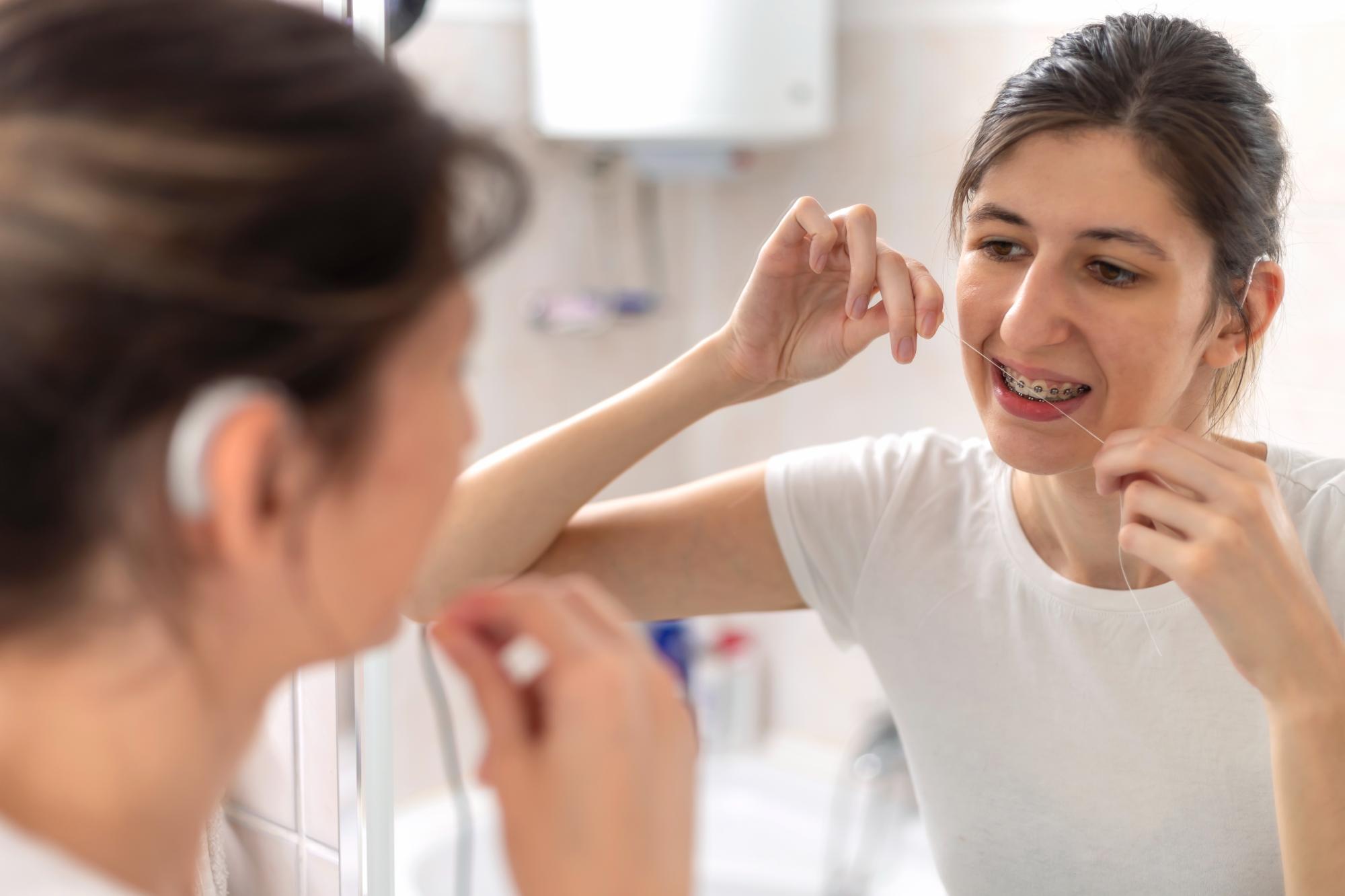Learn how to floss correctly when wearing braces
During orthodontic treatment, maintaining proper oral health habits like brushing and flossing is essential. After all, if you’re investing so much in a healthy smile, you’ll want to make sure you take good care of it! While most people know to regularly brush their teeth, many put off flossing until right before an orthodontic or dental appointment. Unfortunately, failing to floss can result in a dangerous buildup of plaque, which could cause a cavity.
At Adirondack Orthodontics, we aim to equip our patients with dental hygiene knowledge so they can take better care of their teeth. If you’re undergoing orthodontic treatment and you’re not sure how to floss your teeth when you have braces, we can help! Keep reading to learn more.
The Importance of Flossing with Braces
The primary aim of flossing is to remove plaque—a sticky film of bacteria—from the areas between your teeth that aren’t reached by brushing alone. This task becomes even more essential when you have braces, as brackets and wires can obstruct easy access to these regions, increasing the chances of significant plaque buildup and potential tooth decay. Effective flossing is not just about maintaining aesthetics; it involves preventing long-term oral health complications.
Utilize a Water Flosser
A water flosser is a helpful tool for getting those hard-to-reach areas. In fact, according to a study, the Waterpik™ flosser in particular was found to be three times as effective as string floss for orthodontic patients! Your water flosser should come with instructions, but here are a few simple things to remember:
- Fill the water reservoir
- Insert the tip into the handle
- Change to your desired pressure
- Place the tip of the flosser in your mouth
- Turn on the flosser and aim it at the gum line. Then work your way around the tooth, being sure to tend to the brackets and the areas between teeth
Floss By Hand
If you’re used to flossing by hand or a water flosser is cost prohibitive, flossing manually is always an option! A floss threader is affordable and can assist you with flossing with braces. Use the floss threader to help you get the floss behind each wire. Once it’s there, wrap the end of the floss around one finger on each hand. Then, simply floss as you always have; use a “C” motion to get between the teeth and up by the gums to remove food particles.
Common Challenges and Solutions
Flossing with braces may be difficult initially, but several solutions can ease the learning curve:
- Patience is Key: It might take longer to floss when you have braces. Devote this extra time to encourage thorough cleaning as hasty techniques may damage the wires or irritate your gums.
- Gentle Method: Always handle your floss with care to avoid snapping it into your gums. Such rigorousness can lead to discomfort or tears around your braces.
- Consistency and Routine: Incorporate flossing into your regular oral hygiene routine. Aim to floss daily, ideally at night, to remove any remaining particles accumulated during the day.
Get the Healthy Smile of Your Dreams!
The team at Adirondack Orthodontics is standing by to give you your ideal smile. But we can’t do that without your help. Make sure you floss each day, in addition to brushing your teeth, to keep your teeth healthy and plaque-free. If you have any further questions about how to floss, reach out to us. We’d be happy to help!
For more dental hygiene advice, review our guide on how to brush your teeth with braces.
